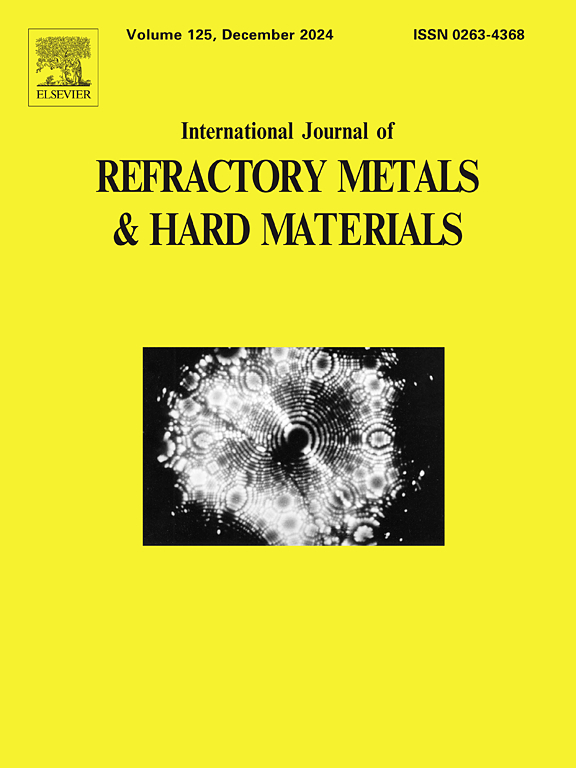Influence of different shaped three-dimensional preforms on the microstructure and wear resistance of WC/Iron-based configuration composites
IF 4.2
2区 材料科学
Q2 MATERIALS SCIENCE, MULTIDISCIPLINARY
International Journal of Refractory Metals & Hard Materials
Pub Date : 2025-03-08
DOI:10.1016/j.ijrmhm.2025.107132
引用次数: 0
Abstract
The mechanical properties of metal matrix composites are frequently reduced due to the uneven distribution of reinforcement particles. In this article, the effects of three-dimensional preforms with different shapes on the microstructure of WC/ Iron-based configuration composites were examined, and the hardness, friction coefficient and wear properties of WC/ Iron-based configuration composites in different regions were measured. The findings reveal that the microstructure of the composites is mainly composed of WC, W2C, Fe6W6C, and M7C3 carbides. Compared with the triangular and quadrilateral configurations, the composite materials prepared by hexagonal configuration have better hardness and wear resistance, the matrix hardness is 921.7HV, the composite layer hardness is 1450.4 HV, the friction coefficient is the lowest (0.51), and the wear weight is the least (0.21 g). The temperature-time curves obtained by finite element simulation also confirm that the designed three-dimensional preform has a favorable metallurgical reaction with the matrix, especially the hexagonal configuration.
不同形状的三维预成形对WC/铁基结构复合材料显微组织和耐磨性的影响
金属基复合材料的力学性能往往由于增强颗粒的不均匀分布而降低。研究了不同形状的三维预制件对WC/铁基复合材料微观组织的影响,并测量了WC/铁基复合材料在不同区域的硬度、摩擦系数和磨损性能。结果表明,复合材料的微观组织主要由WC、W2C、Fe6W6C和M7C3碳化物组成。与三角形和四边形配置相比,六边形配置制备的复合材料具有更好的硬度和耐磨性,基体硬度为921.7HV,复合层硬度为1450.4 HV,摩擦系数最低(0.51);有限元模拟得到的温度-时间曲线也证实了所设计的三维预制件与基体,尤其是六边形预制件具有良好的冶金反应。
本文章由计算机程序翻译,如有差异,请以英文原文为准。
求助全文
约1分钟内获得全文
求助全文
来源期刊
CiteScore
7.00
自引率
13.90%
发文量
236
审稿时长
35 days
期刊介绍:
The International Journal of Refractory Metals and Hard Materials (IJRMHM) publishes original research articles concerned with all aspects of refractory metals and hard materials. Refractory metals are defined as metals with melting points higher than 1800 °C. These are tungsten, molybdenum, chromium, tantalum, niobium, hafnium, and rhenium, as well as many compounds and alloys based thereupon. Hard materials that are included in the scope of this journal are defined as materials with hardness values higher than 1000 kg/mm2, primarily intended for applications as manufacturing tools or wear resistant components in mechanical systems. Thus they encompass carbides, nitrides and borides of metals, and related compounds. A special focus of this journal is put on the family of hardmetals, which is also known as cemented tungsten carbide, and cermets which are based on titanium carbide and carbonitrides with or without a metal binder. Ceramics and superhard materials including diamond and cubic boron nitride may also be accepted provided the subject material is presented as hard materials as defined above.

 求助内容:
求助内容: 应助结果提醒方式:
应助结果提醒方式:


